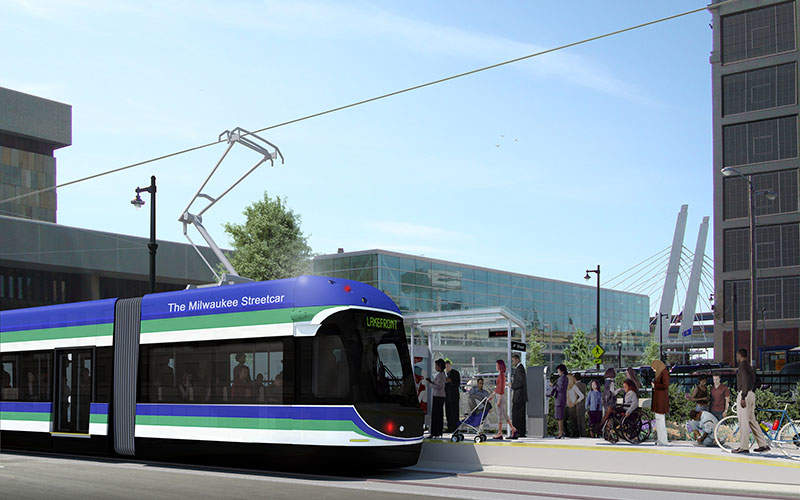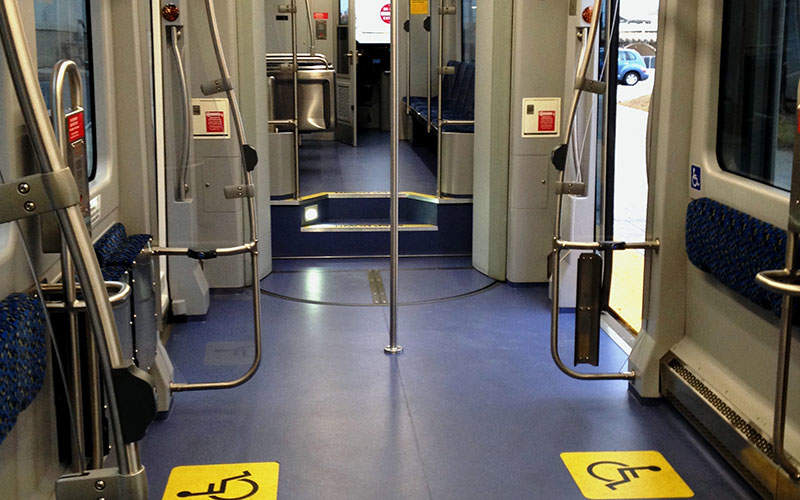The Hop Streetcar, also known as Milwaukee Streetcar, is a streetcar line operating in downtown Milwaukee and nearby neighbourhoods in Wisconsin, US.
The $128.1m project was constructed in phases. It connects 80,000 downtown workers, 25,000 downtown residents and millions of visitors, while establishing a fixed-rail transit operating system in the city. The average daily ridership of the streetcar is 2,297.
Approval for the project was obtained in February 2015 from the City of Milwaukee Common Council. Construction commenced in 2016, while the streetcar began its passenger service in November 2018.
The Hop Streetcar route details
The project route is planned to integrate with major bus routes and corridors, as well as serve as a ‘last mile’ connection for travellers using Milwaukee intermodal station.
Phase one of the project traverses a route connecting the intermodal station to the employment and housing areas located in downtown area. It covers east and west locations between Broadway and Jackson on Kilbourn Avenue connecting the Milwaukee Intermodal Station, Historic Third Ward, Central Business District and the Lower East Side neighbourhood.
Phase two of the project comprises the Lakefront line and connects Cathedral Square to the Lakefront through Broadway, Michigan St and Clybourn St. It also links the mainline to a planned $122m lakefront development, The Couture, which includes a streetcar stop.
Additional route extensions are planned for the future, including connections to Bronzeville, Walker’s Point, Marquette University, the west side of downtown and additional residential and commercial areas on East Side.
Details of the streetcar stops and track
The streetcar route is initially designed to have 22 stops with another 18 stops planned to be added as part of route extensions. Stops are located at a distance of one to three blocks. An important stop is located along the Prospect Avenue between Brady Street and Royall Place that accommodates more than one streetcar vehicle and is designed with wider shelters to hold more people.
The tracks are constructed along the general traffic lanes and are set within the existing right of way. To minimise the impact on the appearance of the streets, the rails are embedded in the roadway and are approximately 6in-deep, and 4ft and 8.5in-wide. In case of multiple lanes, the tracks are located in the right-most lane.
The Hop Streetcar rolling stock
The project features four low-floor streetcar vehicles that are between 65ft and 85ft in length. The vehicles runs at speeds ranging from 25mph to 30mph, and be able to accommodate between 150 and 200 passengers.
Streetcars have two doors on each side and 32 seats with 14 seats on each side and four flip-down seats in the centre. Its low floor makes boarding easier for wheelchairs, pushchairs and bikes.
The streetcar is electrically powered by four 99kW AC traction motors and operates in standard 56.5in track gauge. It draws electricity from an overhead contact system through a wire with supporting poles and substations located along the route.
Funding for the The Hop Streetcar
The construction cost of the two phases of the project is $98.9m and $29.2m respectively.
The US Congress granted $54.9m for the construction of the project, while a grant of $14.2m was received from the US Department of Transport (USDOT) for the Lakefront line. During the first 18 months of its operations, approximately 65% of the costs are met through a federal congestion mitigation and air quality grant that has a possible extension of a further 18 months.
The project is further funded through fares, sponsorships, advertising, federal grants and revenues from city-owned parking meters and lots. Operation costs during the first three years are partly covered by the introductory fare of $1 a ride, as well asw sponsorships and advertisings.
Contractors involved
Kiewit Infrastructure was awarded a $67m construction management-general contractor (CMGC) contract in 2016.
Transdev received a five-year contract from Milwaukee’s Department of Public Works for carrying out to service operations, including overall system performance, customer care, and safety.
A $18.6m contract was awarded to Brookville Equipment Corporation to build and supply four streetcars. The company’s Pennsylvania plant manufactured the vehicles.
TERRA was contracted to provide traffic analysis, survey, hollow walk investigations, and traffic maintenance to support the design of the streetcar.
An agreement was executed with We Energies to conduct a detailed review of the impacted facilities and present a final design of the proposed solutions. Milwaukee Composites manufactured the floors of the streetcar.
A team comprising HNTB and HDR was contracted to provide final design services for the streetcar. Maintenance Design Group was subcontracted by HNTB to provide operational, functional and industrial equipment design for the operations and maintenance facility.
The City of Milwaukee Department of Public Works awarded the five-year streetcar operating contract to Transdev Services in October 2017.





